Year :
2021
Title :
Biology
Exam :
WASSCE/WAEC MAY/JUNE
Paper 1 | Objectives
1 - 10 of 50 Questions
| # | Question | Ans |
|---|---|---|
| 1. |
Which of the following organelles is common to both plant and animal cells A. Cellulose cell wall B. Chlorophyll C. Cell membrane D. Large vacuole |
C |
| 2. |
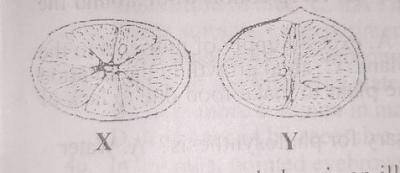 The sections in X and Y respectively, are A. longitudinal and transverse B. transverse and longitudinal C. cross and transverse D. transverse and cross |
B |
| 3. |
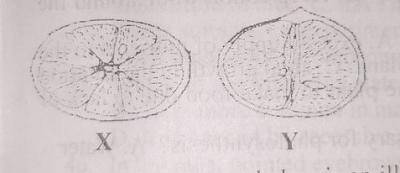 The fruit that has the illustrated sections is a A. hesperidium B. capsule C. drupe D. cypsela |
A |
| 4. |
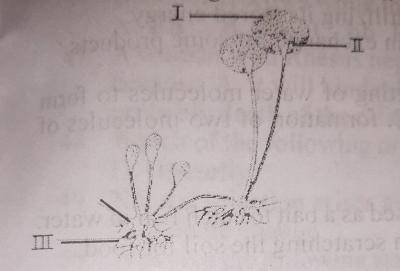 The structure labelled I is associated with A. sexual reproduction B. asexual reproduction C. bud formation D. gamete formation |
B |
| 5. |
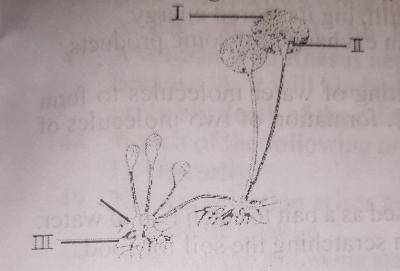 The structure labeled II is the A. spore B. stolon C. columella D. sporangium |
D |
| 6. |
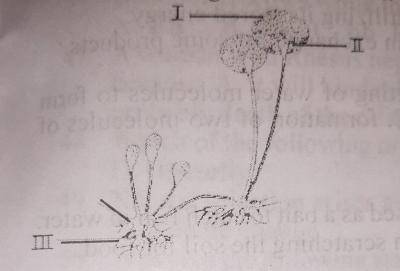 Which of the following statements about the structure labeled III is correct? A. secretes digestive enzymes into the substrate B. absorbs mineral salts from the soil C. forms the root hairs of the organism D. develops into stolon |
A |
| 7. |
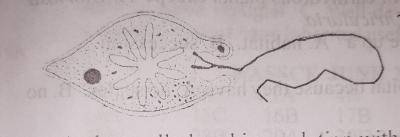 The level of organization of the organism is A. tissue B. cell C. organ D. system |
B |
| 8. |
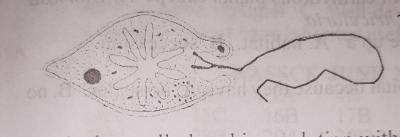 The organism belongs to the Phylum A. Rhizopoda B. Ciliophora C. Euglenophyta D. Rhodophyta |
C |
| 9. |
A plant cell placed in a solution with a higher water potential will A. expand and then shrink B. enlarge and become turgid. C. expand and then burst D. decrease in size and become flaccid |
D |
| 10. |
Offspring formed by sexual reproduction exhibit more variation than those formed by asexual reproduction because A. greater amount of DNA is involved in sexual reproduction B. gametes of parents have different genetic composition C. genetic materials come from parents of two different species D. sexual reproduction is a lengthy process |
B |
| 1. |
Which of the following organelles is common to both plant and animal cells A. Cellulose cell wall B. Chlorophyll C. Cell membrane D. Large vacuole |
C |
| 2. |
 The sections in X and Y respectively, are A. longitudinal and transverse B. transverse and longitudinal C. cross and transverse D. transverse and cross |
B |
| 3. |
 The fruit that has the illustrated sections is a A. hesperidium B. capsule C. drupe D. cypsela |
A |
| 4. |
 The structure labelled I is associated with A. sexual reproduction B. asexual reproduction C. bud formation D. gamete formation |
B |
| 5. |
 The structure labeled II is the A. spore B. stolon C. columella D. sporangium |
D |
| 6. |
 Which of the following statements about the structure labeled III is correct? A. secretes digestive enzymes into the substrate B. absorbs mineral salts from the soil C. forms the root hairs of the organism D. develops into stolon |
A |
| 7. |
 The level of organization of the organism is A. tissue B. cell C. organ D. system |
B |
| 8. |
 The organism belongs to the Phylum A. Rhizopoda B. Ciliophora C. Euglenophyta D. Rhodophyta |
C |
| 9. |
A plant cell placed in a solution with a higher water potential will A. expand and then shrink B. enlarge and become turgid. C. expand and then burst D. decrease in size and become flaccid |
D |
| 10. |
Offspring formed by sexual reproduction exhibit more variation than those formed by asexual reproduction because A. greater amount of DNA is involved in sexual reproduction B. gametes of parents have different genetic composition C. genetic materials come from parents of two different species D. sexual reproduction is a lengthy process |
B |